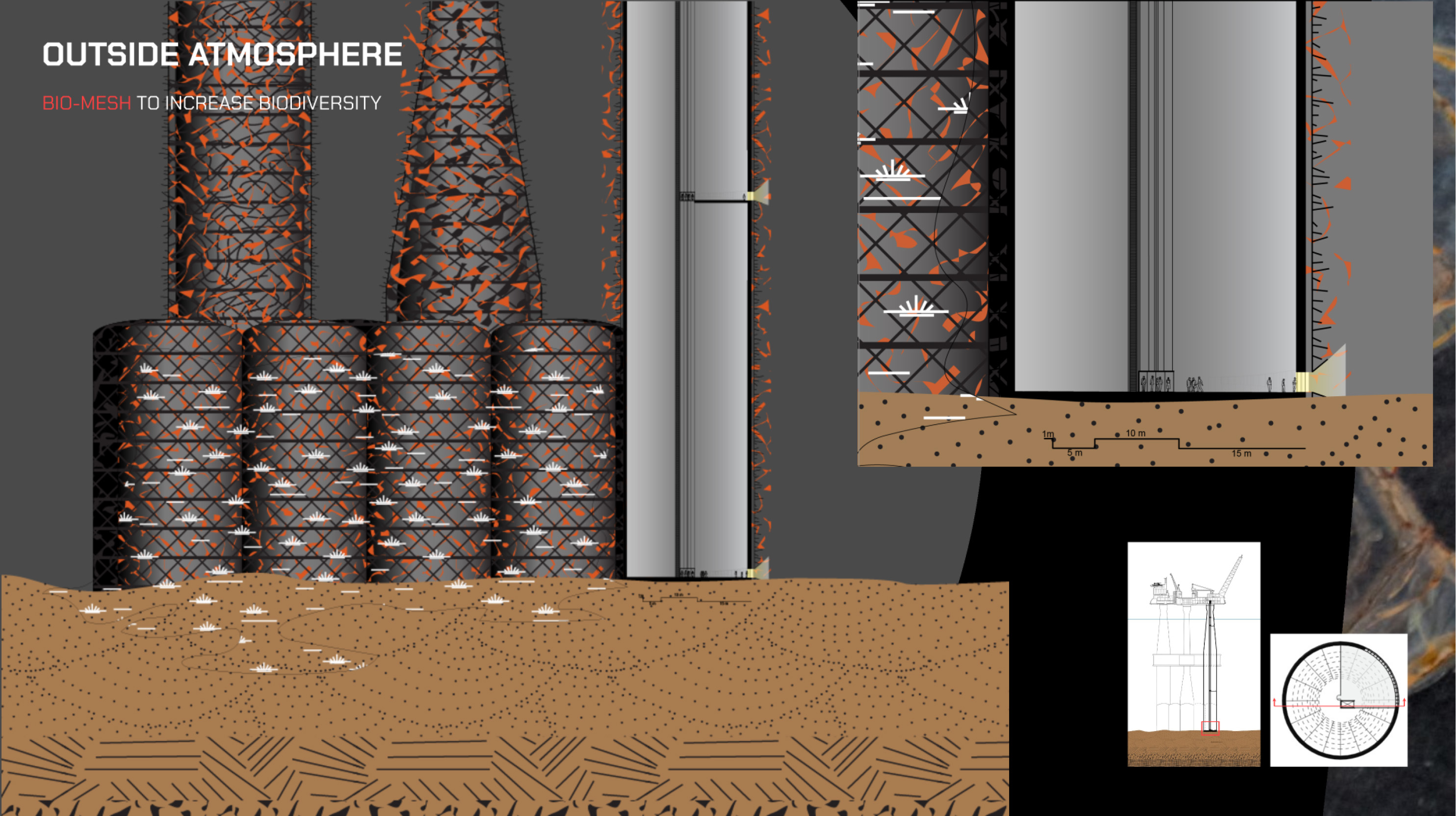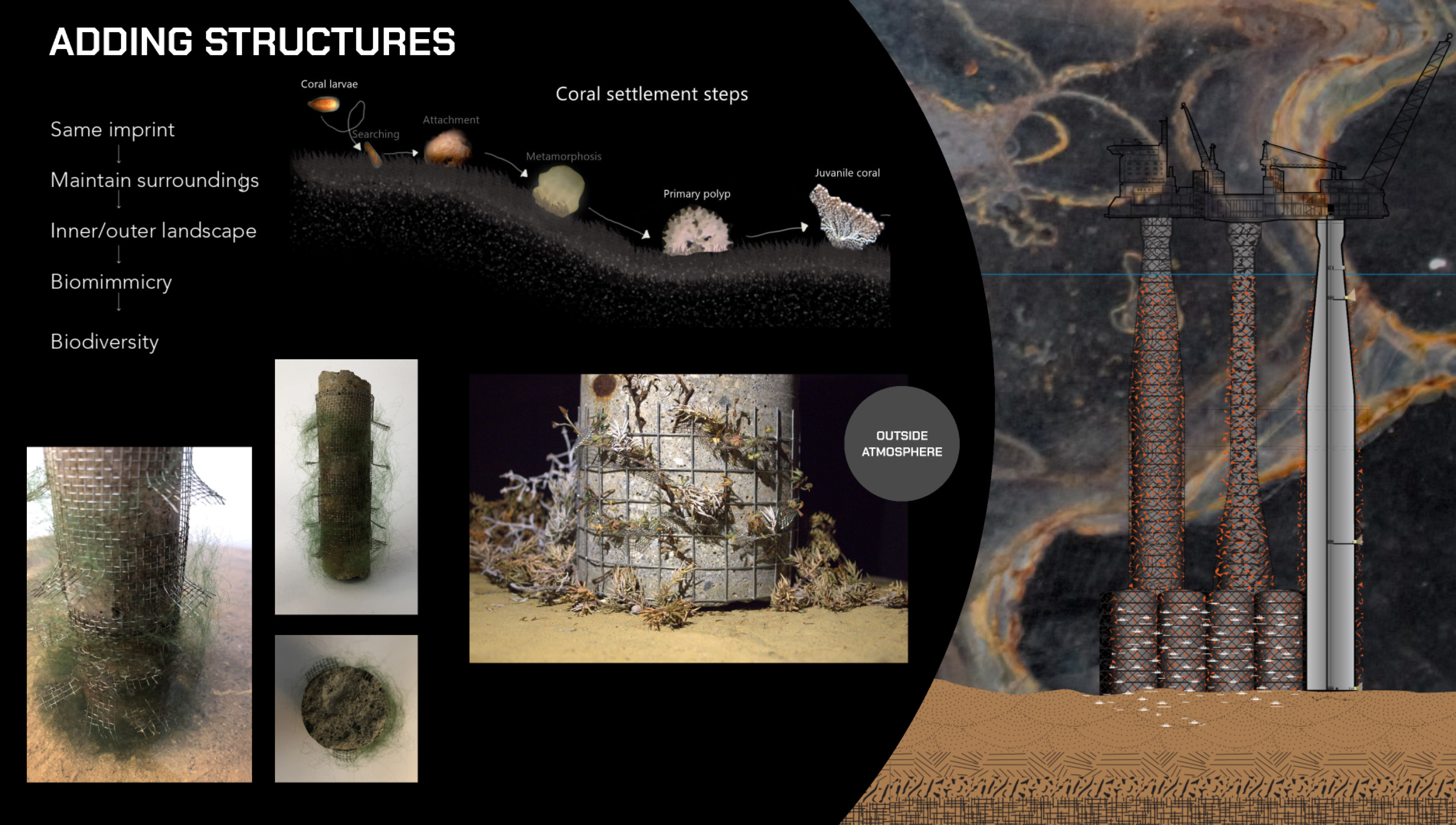Ocean Colonization
Christine Hagatun and Maren Roscher
We want to colonize the North Sea, but not for the humans this time, but for the biodiversity. We have focused upon deep concrete platforms to see how this could contribute to enhance the habitat of cold-water coral reefs. A quote from Architecture and the planetary imaginary, “to work well, the predator must understand the behaviour of the pray”, inspired us in our work in the aspect of increasing the biodiversity in the North Sea. We developed a timeline containing the past, today and the future in the aspect of the decommissioning of the concrete platforms, also called condeep structures, and looked upon the consequences of the biodiversity. Troll A was the condeep platform that was used as the main reference-site, in our conceptual proposal.As we mentioned, the decommissioning of condeep platforms is in near future. Based on research, we divided the proposed scenarios into three different categories.
Erase: if we take it all away
We will get a new imprint and destroying the corals and biodiversity, but we will getwhat we call, “a clean ocean”.
Split and smash: The already existing structure at site
If we use the method of split and smash, it will contribute to a new structure, new imprint and a new topography -which can be seen as an imprint of our current time.So, they have a similar outcome as erase, but different topography, wish could give different growing conditions for corals. But they start from scratch again. Growing 2 cm a year, we destroy decades of reef building..
Settle: Leave it as it is, keeping the structure and let it settle
With creating a space and an atmosphere within a structure, giving the people the possibility to experience the deep-sea biodiversity that exist-and also, create an outer surface that is designed for meeting the premises of coral growth mimic the shapes they thrive on.



